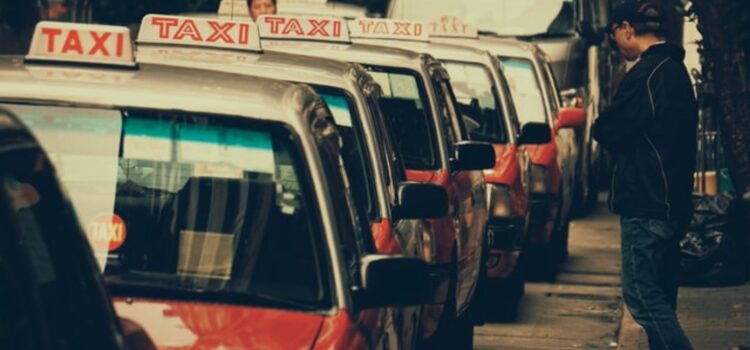

This article is an excerpt from the Shortform book guide to "The Upstarts" by Brad Stone. Shortform has the world's best summaries and analyses of books you should be reading.
Like this article? Sign up for a free trial here .
When did Uber enter China? And why did the ride-hailing giant end up selling its Chinese operations to its Beijing-based rival?
Uber entered China in early 2014, launching its black-car service in Shanghai, Beijing, Guangzhou, and Shenzhen. However, the company ended up selling its Chinese operations because the losses Uber was incurring to win a meaningful market share were unsustainable.
Here is the timeline of events that have led to ceding off Uber China to its biggest competitor Didi Chuxing.
Uber China Timeline: 2012-2016
June 2012: Cheng Wei leaves Alibaba and finds Didi Dache after learning of the Hailo-Uber battle.
- Among 30+ ridesharing competitors in China, Didi differentiates strategy by giving their free app to younger drivers who already had phones, rather than giving smartphones to drivers.
April 2013: Kuaidi Dache raises funding from Alibaba. In response, Didi quickly raises from Tencent.
- In China, dominant share is often established by the startup with the strongest connection to the big 3 – Tencent, Baidu, and Alibaba.
Summer 2013: Kalanick travels to China to try a pilot in Beijing. He meets Cheng Wei and calls him “special…a massive cut above anyone else in the industry.”
Nov 2013: Cheng Wei tries to raise capital in Didi, only to be rejected by multiple investors. He attributes it to Didi’s high burn rate (in 2014, Didi burnt through $100,000 every day).
Feb 2014: Tencent has a big hit with the Red Envelope app, which allows gifting of money as per Chinese custom. Suddenly Alibaba and Tencent get into a mobile payments war, with Didi and Kuaidi as strategic pieces.
Early 2014: Uber launches its black-car service in Shanghai, Beijing, Guangzhou, and Shenzhen.
Oct 2014: Uber introduces UberX in 4 Chinese cities. In December, it raises from Baidu.
Jan 2015: China’s Ministry of Transport rules that private car owners are not allowed to use ride-hailing apps for profit. However, Uber, Didi, and other apps are still allowed to operate, possibly because it helped alleviate transportation issues.
Feb 2015: After burning a lot of money, Didi and Kuaidi decide to merge to form Didi Kuaidi, with Didi controlling 60% of the merged company.
Spring 2015: Kalanick meets with Cheng Wei and asks for a 40% stake in the company, in return for ceding China to Didi. If refused, Kalanick would hand Didi an “embarrassing defeat.” Didi rejects the proposal.
May 2015: Didi says it’ll give away 1 billion RMB in rides. Uber matches it.
Sept 2015: Didi invests $100MM in Lyft. It also establishes an anti-Uber coalition with Lyft, Ola in India, and Grab Taxi in Southeast Asia.
2016: Didi Chuxing (renamed) raises $7B in 2016 and reaches 5,000 employees. It claims an 85% market share in China and is active in 400 cities, while Uber is only in 100. At their peaks, Didi and Uber are both losing $1B per year in China.
Jul 2016: Uber finally cedes China to Didi, getting 17% in Didi and a $1B investment.

———End of Preview———
Like what you just read? Read the rest of the world's best book summary and analysis of Brad Stone's "The Upstarts" at Shortform .
Here's what you'll find in our full The Upstarts summary :
- How Airbnb and Uber started as side projects before becoming the giants they are now
- How virality helped both Uber and Airbnb grow
- Why circumventing local laws was essential to growth






